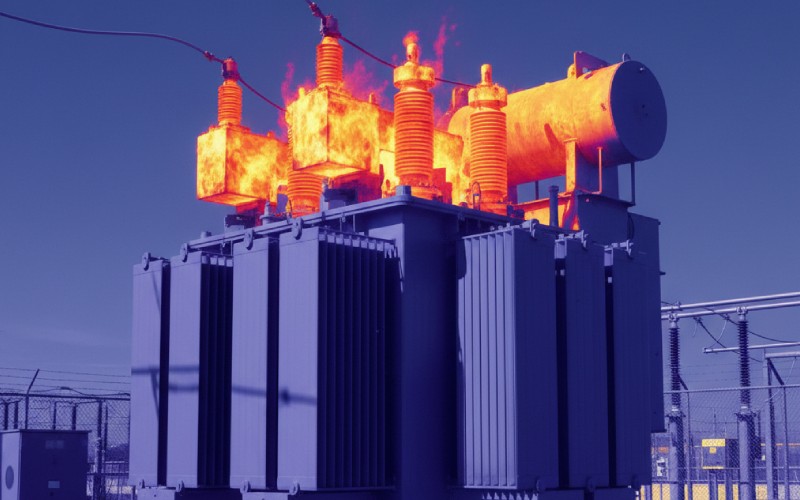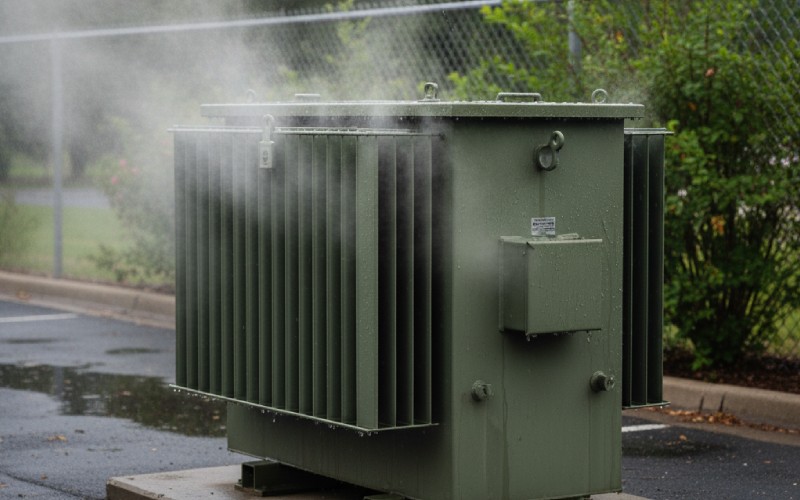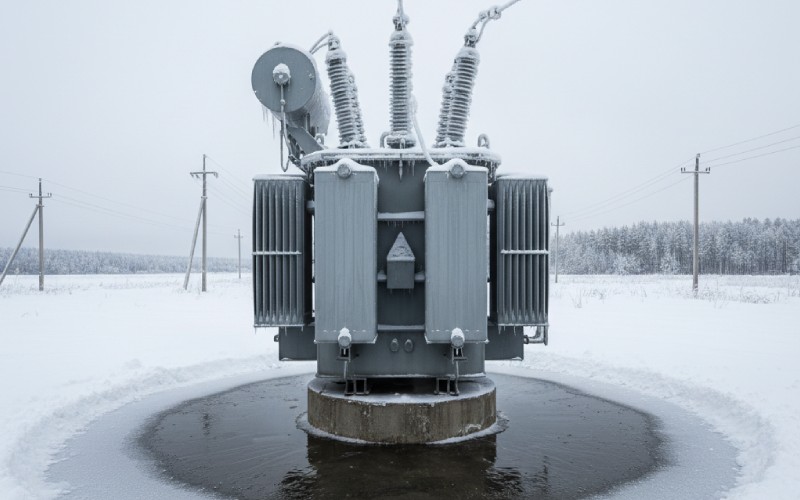Let Sino's Lamination Stacks Empower Your Project!
To speed up your project, you can label Lamination Stacks with details such as tolerance, material, surface finish, whether or not oxidized insulation is required, quantity, and more.

A transformer is a very important piece of our electric world. It gives power to everything. This includes your phone charger and even whole cities. But, you should know that a transformer wastes a small amount of energy every time it works. This wasted energy costs money. It can also change how well the transformer does its job. In this article, you will learn about a major type of energy loss. It is called core losses. People also call it no-load losses. When you understand these losses, you will see why picking the right transformer is a big deal. It helps save energy and makes things work better. Let’s start learning about transformer losses.
A transformer is a simple machine, but it is very powerful. It changes electricity from one voltage level to another voltage level. For instance, a large transformer on a power pole can take high voltage and make it a lower, safer voltage for your home. Every transformer has at least two sets of wires inside. These are called a winding or a coil. The first set is the primary winding, which takes in power. The second set is the secondary winding, which sends power out. These wires are most often wrapped around an iron part called the transformer core.
The operation of a transformer is not perfect. Some energy is lost when electricity goes through the transformer. These transformer losses become heat. It is like rubbing your hands together. They get warm because of friction. A transformer that is working also generates heat. This heat loss is energy that is wasted. If we understand why this energy loss happens, we can make better transformers. These transformers will be more efficient. Certain losses always happen. Other losses change based on how much electricity is being used. Because of this, handling these losses is a very important part of transformer design.
No, there are different kinds of transformer losses. We can sort them into two big groups. The first is core losses, which are also called no-load losses. The second is load losses, which are also called copper loss. The main way they are different is when they happen. Core losses are always there. They happen anytime the transformer is energized. This is true even if the transformer is not powering anything. But load losses are different. They only happen when there is a load on the transformer.
Load losses come from the copper wire in the winding. This wire resists the flow of electricity. An electrical current passes through the primary and secondary windings. The conductor material fights this current flow. Due to the resistance, it generates heat. When more current flows, the load losses get bigger. People sometimes call this copper loss. This is because the winding parts are made of copper. The amount of this loss due to the resistance gets bigger very fast. It is based on the square of the load current. For example, if the load current doubles, the copper loss will be four times larger.
| Feature | Core Losses (No-Load Losses) | Load Losses (Copper Loss) |
|---|---|---|
| When It Happens | Anytime the transformer has power | Only when the transformer is powering something |
| What It Depends On | Voltage and frequency | How much load current is flowing |
| Where It Happens | Inside the transformer’s core | Inside the transformer’s winding |
| Other Names | Iron Loss, No-Load Loss | I²R Loss, Copper Loss |

Core losses are the energy loss that happens inside the magnetic core of a transformer. This happens because of the alternating magnetic field. A transformer needs this field to do its job. An alternating current goes through the primary coil. This makes a changing magnetic flux in the core material. This changing flux is what lets the transformer move energy. It moves it from the primary winding to the secondary winding. But, this same action also makes the transformer lose energy. This energy to be lost turns into heat right inside the core.
There are two main reasons for these losses. They are hysteresis and eddy current. We call them hysteresis and eddy current losses when we talk about them together. These power losses are always there if the transformer is on. This is because the voltage is always making that changing magnetic field. It makes no difference if you are using the transformer to power a lamp or not. The loss occurs all the time. That is why controlling core losses is a big deal for the efficiency of a transformer. If a transformer is on all day and all night, it will waste energy the whole time because of these losses.
The name “no-load losses” helps us understand when this loss happens. It gets this name because the loss is there even with no-load. A load is something connected to the secondary winding. A “load” is any item that uses power from the transformer. Examples are a light bulb, a motor, or a computer. Even when nothing is hooked up, a small primary current still goes into the transformer. This current is needed to make the magnetic flux inside the core.
This small bit of current keeps the transformer’s core ready to work. It keeps the core in a state of magnetization. The energy it uses for this job is what we call no-load losses. This action happens all the time when the transformer is on. So, the loss never changes. The amount of load current going to a device has no effect on the core loss. So, the core loss stays the same if the transformer is working hard or doing nothing at all (no-load). This is very different from load losses. Load losses are zero when there is no-load.
Hysteresis loss is one piece of the core losses. A good way to picture it is to think of the magnetic core material as having lots of tiny magnets inside. The alternating current in the primary coil flows in one direction. This makes the tiny magnets line up. Then, the current switches and flows the other way. Now, all those tiny magnets have to flip and line up in the new direction. This happens over and over, very fast. The core material fights against these fast changes. This fight is called hysteresis.
This “magnetic friction,” or hysteresis, uses up energy. The energy it takes to keep flipping the tiny magnets turns into heat. This heat loss is the hysteresis loss. The amount of loss due to hysteresis is based on the type of material used for the core. Some materials have less “friction” than others. For a transformer, builders pick a magnetic core material with low hysteresis. A good example is silicon steel. This choice helps to minimize this type of energy dissipation. The constant changes in magnetic direction cause this loss.
The other piece of core losses is called eddy current loss. The changing magnetic field in the transformer’s core does more than one thing. It makes a voltage in the secondary coil. But it also makes a voltage inside the iron core itself. The core is a conductive material. So, this voltage makes small circles of current flow inside the core. We call these unwanted induced currents eddy currents.
These small circles of current flow move through the core. The core material has some resistance to electricity. Because of this, the eddy current generates heat. This is a lot like how current passes through a copper winding to make copper loss. The energy that is dissipated as heat by these currents is the eddy current loss. This loss of energy is directly proportional to how fast the current changes and how strong the magnetic flux is. A stronger flux creates a bigger magnetic force. This will induce a larger eddy current.
Yes, we can reduce core losses. We can specifically lower eddy current loss with smart transformer design. The best way to do it is to make it harder for the eddy currents to flow. We know that a big, solid piece of metal lets a large eddy current form. So, instead of using a solid block of iron, builders make the transformer core from a laminated core. This means the core is made of many very thin sheets of steel. These sheets are called a lamination.
Each thin sheet, or lamination, has a special coating on it. This coating acts as a wall that does not let electricity pass through. It is very hard for the current to jump from one lamination to the next. This breaks up the big circular paths an eddy current wants to follow. The current can only flow in small circles inside each thin sheet. This creates much weaker eddy currents, which are known as eddy currents. This method greatly lowers the total eddy current loss. Using a laminated core is the normal way to minimize losses caused by eddy currents and enhance transformer efficiency. We laminate the core to reduce eddy current flow.
The core material is a very big deal for transformer performance. It also affects the efficiency of transformers. A great core material needs to do two things well. First, it should be easy to magnetize and then un-magnetize. This helps to minimize hysteresis loss. Materials with low hysteresis do not fight the changing magnetic field as much. This means less energy waste. Silicon steel is used a lot because it has great magnetic abilities and low hysteresis.
Second, the core material should have a high resistance to electricity. This helps to minimize eddy current loss. If the resistance is higher, it is harder for an eddy current to flow, even if the voltage is the same. Putting silicon into steel makes its resistance go up. This is another reason it is a great choice for a transformer. The thickness of the lamination also plays a part. A thinner lamination helps to reduce eddy currents even more. The main goal is to pick a material that can handle a strong magnetic flux but has the smallest possible hysteresis and eddy losses.

Core losses have a real effect on the operation of a transformer. These losses are always happening. They are a constant drain on energy as long as the transformer is on. This wasted energy becomes heat. This heat makes the transformer warmer. If a transformer gets too hot, the insulation on the winding can get damaged. This can make the transformer not last as long. So, the heat from core losses needs to be controlled. This often requires cooling systems.
Even more, core losses lower transformer efficiency. Transformer efficiency tells us how much of the power put in comes out as useful power. Every bit of power lost as heat is power that does not reach the device it is supposed to power. Over the entire life of a transformer, this steady energy loss can cost a lot of money. This is very true for huge power transformers that are on for many years. Better voltage regulation and high efficiency come from having lower losses. This is why power companies will pay more for a high-efficiency transformer with low core losses.
To reduce core losses and improve performance of a transformer, builders work on two key things. They focus on the core material and how the core is built. The idea is to fix both hysteresis loss and eddy current loss. The first step is to use a high-quality core material. There are special types of silicon steel made to have very low hysteresis. Some new transformer models even use amorphous metal cores. These have even lower hysteresis loss.
To fight eddy current loss, using a laminated core is the best solution. The laminations should be as thin as they can be. Each one also needs a good coating to insulate it from the others. A well-made transformer with a top-quality, thin-lamination core will have very low core losses. When you pick a transformer, check its no-load loss numbers. A lower number means less wasted energy and cheaper running costs over time. This helps to reduce energy use.
Here is a quick list of the most important ideas about transformer core losses: